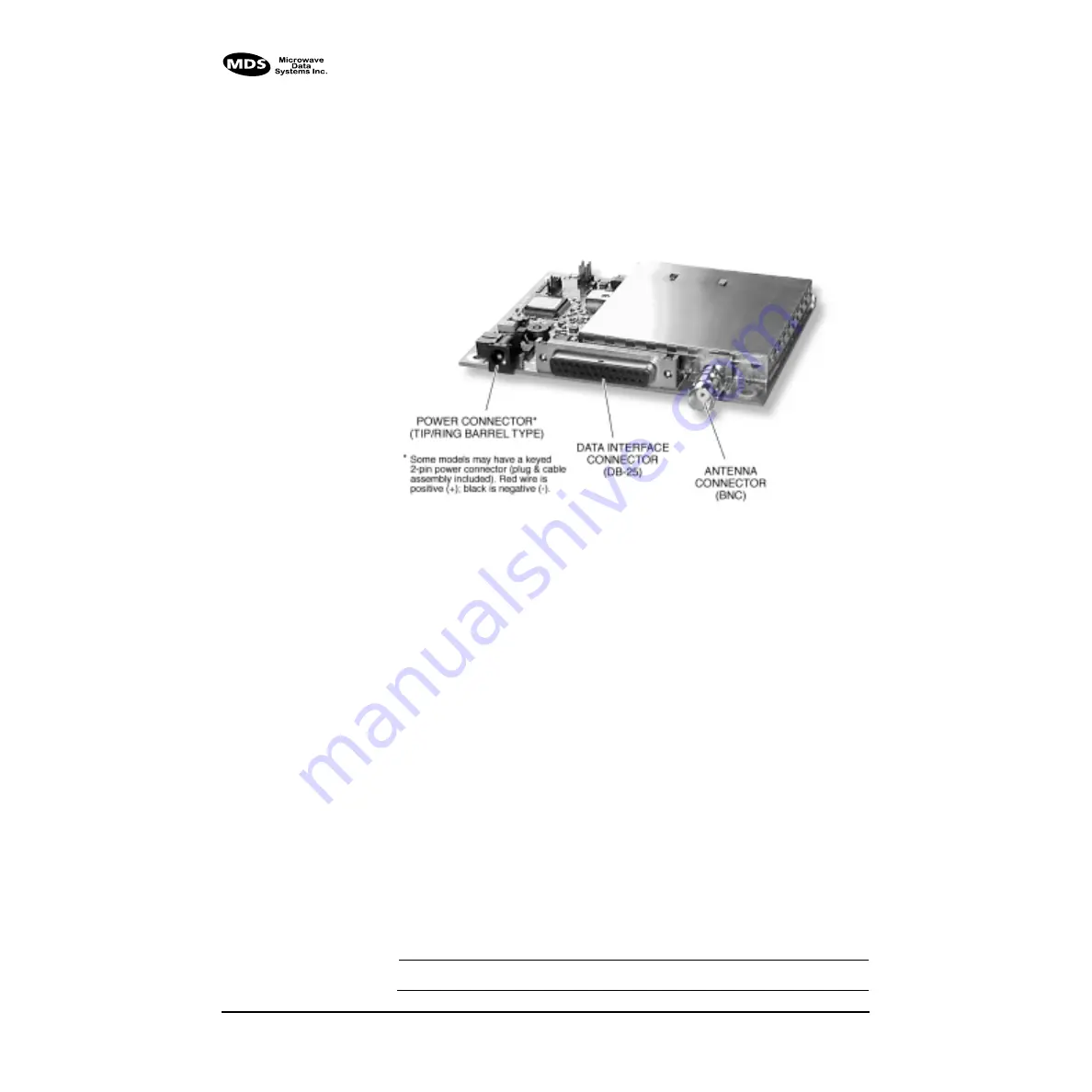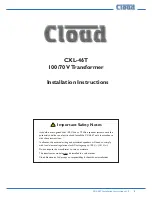
6
OEM Series™ I/O Guide
MDS 05-3624A01, Rev. B
2.0
INSTALLATION
There are three main requirements for installing the transceiver—
adequate and stable primary power, a good antenna system, and the
correct data connections between the transceiver and the data device.
shows the external connections for the transceiver.
Invisible place holder
Figure 5. External Connections to the Transceiver Board
(Connector locations identical to enclosed radio)
2.1 Installation Steps
Below are the basic steps for installing the transceiver. In many cases,
these steps alone are sufficient to complete the installation. More
detailed explanations appear at the end of these steps.
1. Mount the transceiver to a stable surface using the appropriate
hardware.
2. Install the antenna and antenna feedline for the station. Preset
directional antennas in the desired direction of transmission and
reception.
3. Measure and install the primary power for the radio. The primary
power must be between 10 and 30 Vdc and be capable of supplying
at least 600 milliamperes. (600 mA requirement assumes a 2 watt
RF output. Lower current consumption is possible if lower output
power may be used in your application—see
NOTE:
Use the radio in negative ground systems only.















































